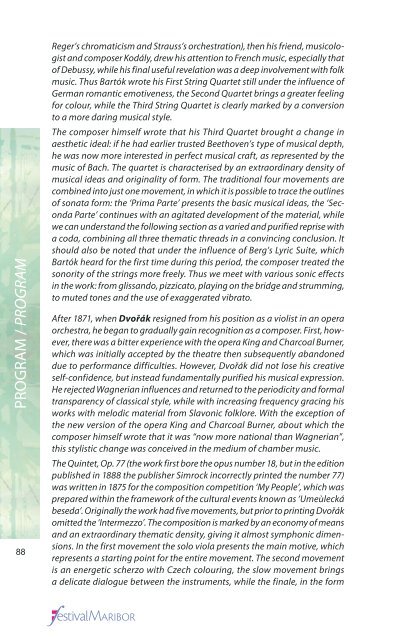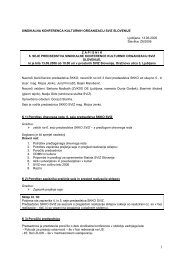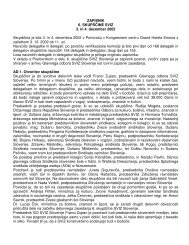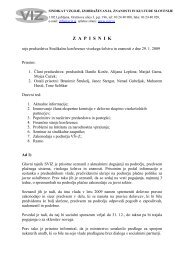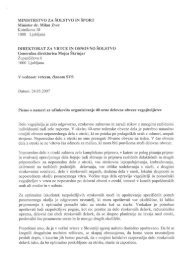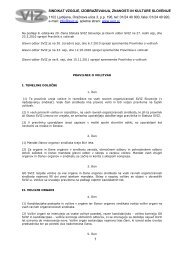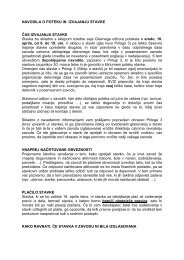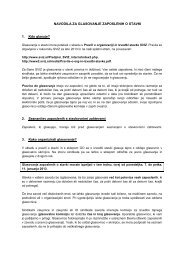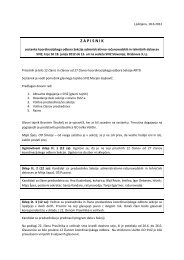You also want an ePaper? Increase the reach of your titles
YUMPU automatically turns print PDFs into web optimized ePapers that Google loves.
PROGRAM / PROGRAM<br />
88<br />
Reger’s chromaticism and Strauss’s orchestration), then his friend, musicologist<br />
and composer Kodály, drew his attention to French music, especially that<br />
of Debussy, while his final useful revelation was a deep involvement with folk<br />
music. Thus Bartók wrote his First String Quartet still under the influence of<br />
German romantic emotiveness, the Second Quartet brings a greater feeling<br />
for colour, while the Third String Quartet is clearly marked by a conversion<br />
to a more daring musical style.<br />
The composer himself wrote that his Third Quartet brought a change in<br />
aesthetic ideal: if he had earlier trusted Beethoven’s type of musical depth,<br />
he was now more interested in perfect musical craft, as represented by the<br />
music of Bach. The quartet is characterised by an extraordinary density of<br />
musical ideas and originality of form. The traditional four movements are<br />
combined into just one movement, in which it is possible to trace the outlines<br />
of sonata form: the ‘Prima Parte’ presents the basic musical ideas, the ‘Seconda<br />
Parte’ continues with an agitated development of the material, while<br />
we can understand the following section as a varied and purified reprise with<br />
a coda, combining all three thematic threads in a convincing conclusion. It<br />
should also be noted that under the influence of Berg’s Lyric Suite, which<br />
Bartók heard for the first time during this period, the composer treated the<br />
sonority of the strings more freely. Thus we meet with various sonic effects<br />
in the work: from glissando, pizzicato, playing on the bridge and strumming,<br />
to muted tones and the use of exaggerated vibrato.<br />
After 1871, when Dvořák resigned from his position as a violist in an opera<br />
orchestra, he began to gradually gain recognition as a composer. First, however,<br />
there was a bitter experience with the opera King and Charcoal Burner,<br />
which was initially accepted by the theatre then subsequently abandoned<br />
due to performance difficulties. However, Dvořák did not lose his creative<br />
self-confidence, but instead fundamentally purified his musical expression.<br />
He rejected Wagnerian influences and returned to the periodicity and formal<br />
transparency of classical style, while with increasing frequency gracing his<br />
works with melodic material from Slavonic folklore. With the exception of<br />
the new version of the opera King and Charcoal Burner, about which the<br />
composer himself wrote that it was “now more national than Wagnerian”,<br />
this stylistic change was conceived in the medium of chamber music.<br />
The Quintet, Op. 77 (the work first bore the opus number 18, but in the edition<br />
published in 1888 the publisher Simrock incorrectly printed the number 77)<br />
was written in 1875 for the composition competition ‘My People’, which was<br />
prepared within the framework of the cultural events known as ‘Umeùlecká<br />
beseda’. Originally the work had five movements, but prior to printing Dvořák<br />
omitted the ‘Intermezzo’. The composition is marked by an economy of means<br />
and an extraordinary thematic density, giving it almost symphonic dimensions.<br />
In the first movement the solo viola presents the main motive, which<br />
represents a starting point for the entire movement. The second movement<br />
is an energetic scherzo with Czech colouring, the slow movement brings<br />
a delicate dialogue between the instruments, while the finale, in the form


